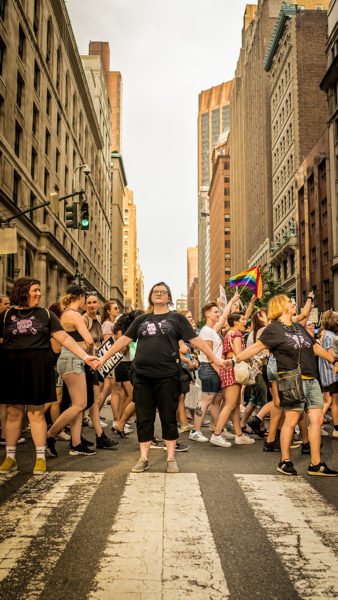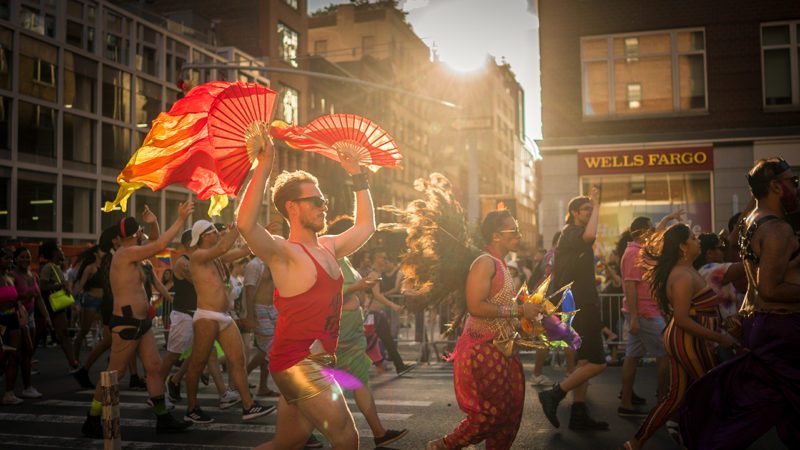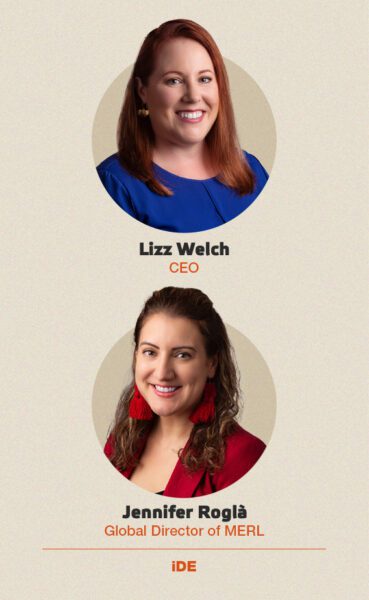Rethinking Copyright in the Age of Generative AI
Striking a balance between incentives and innovation

Pride hug; Photo by Isabelle Swiderski
Looking at it now, it all seemed so simple.
We were lying on your couch; I remember.
You took a Polaroid of us,
then discovered,
the rest of the world was black and white,
but we were in screaming color.
And I remember thinking:
are we out of the woods?
Are we in the clear?”
—Taylor Swift, Out of the Woods, from the album 1989
Is there such a thing as being “too much”? Is it desirable, or just seemingly safer, to seek assimilation and downplay queerness to ward off violence and exclusion?
Researchers estimate that the average healthy human eye can discern about a million shades of color — approximately 100 through each of its three types of receptors, called cones, which respond to red, green, and blue light. Based on signals from these cones, our brains interpret color. It was thought that, while we could account for some variation, we all roughly had access to a comparable spectrum of hues. However, it was recently discovered that a small fraction of women experience tetrachromacy, a gene variant affecting the development of the retina which allows some individuals to perceive degrees of luminance and arrays of colors invisible to the rest of us. What might seem drab or unremarkable to the majority is speckled with dazzling accents in the tetrachromat’s eye.
It might be akin to suffering from myopia and suddenly seeing, through someone’s borrowed eyeglasses, the intricate textures in a tree’s leaves. A vibrant new world is revealed —infinitely nuanced, multi-dimensional, and maybe a little foreign.

Police at pride march in San Francisco; Photo by Isabelle Swiderski
It turns out this rare sensitivity can be mimicked in a way. By repeated exposure, observation, and a better understanding of color theory, non- tetrachromats can learn to discern more subtleties in the hues than they did prior to doing the work. In other words, bit by bit, we can learn to change how we see.
In 1969, the Stonewall Inn riots took place in New York City, ignited by trans women of color and Village “street kids” fed up with the constant harassment, threats, and raids perpetrated by police. Though the uprising signaled a turning point for gay rights — as an explicit call for a liberation movement — and paved the way to some hard-won legal rights and freedoms, some might argue that the advances made since then have been largely cosmetic and revocable. That in seeking expediency and the short-term, conditional rewards of mainstream tolerance, the potential to ever achieve true liberation and equity was weakened.

Perfectly imperfect; Photo by Isabelle Swiderski
As with other civil rights efforts, some battles might be ruled on, won, or lost, but the war itself is waged in hearts and minds, rather than in courtrooms. There is a fine, but sharp, line between tolerance and moral acceptance, between adaptation and fundamental change. As queer activist Urvashi Vaid, who very recently lost her courageous battle with cancer, outlines in Virtual Equality: “ . . . gay and lesbian people are at once insiders, involved openly in government and public affairs to a degree never before achieved, and outsiders, shunned by our elected officials unless they need our money or votes in close elections. We are at once marginal and mainstream, at once assimilated and irreconcilably queer. We are at once members of the traditional family — as its children, as siblings, parents, and grandparents — but are treated as if we are aliens to the family as an institution.”
As a result of that enduring tension, access to economic opportunity is uneven, and community leaders such as Louise Chernin, the former CEO of the Greater Seattle Business Association — the largest LGBTQI chamber of commerce in North America —, have had to find ways, over the years, to shift and adapt to changing realities.
“Our community has great needs, and often is not recognized for having those needs. There are lots of stereotypes that the gay community has plenty of money. And a certain segment might — as in every community — but it certainly isn’t true of the women, the lesbian, bi, Q, trans women in our community, because they often face double barriers from being a woman and a member of the LGBTQIA community.”
Justification for marginalization of LGBTQI folks is tightly linked to anachronistic, but still-in-the-books sodomy laws and mental illness diagnoses. Conversion therapy, which is an attempt to change a person’s sexual orientation, gender identity, or gender expression, continues to be legal in many countries, and it was only in 1973 that the American Psychiatric Association (APA) removed “homosexuality” as a disease to be treated, from the second edition of its Diagnostic and Statistical Manual (DSM).
It is this persistent resistance to a “normalization” of homosexuality that continues to both hinder and help the representation of queer folks, particularly in popular culture. Being gay is cool and edgy, or punishable by death, depending on where on the map the coin might fall.
It is this persistent resistance to a “normalization” of homosexuality that continues to both hinder and help the representation of queer folks, particularly in popular culture.
In April 1997, Ellen DeGeneres made headlines by coming out in the press, as the Ellen sitcom echoed real-life by featuring a lesbian kiss between the stand-up comedian’s character, Ellen Morgan, and the woman she’s fallen for (played by Laura Dern). Shortly after the controversial episode aired, the show failed to maintain ratings, and was cancelled by the network.

Safecrossing; Photo by Isabelle Swiderski
Only more recently, in popular, ground-breaking TV series from The L- Word (in 2004, and its follow-up The L-Word Generation Q in 2019), to Heartstopper (2022) or critically-acclaimed films like Tom Ford’s A Single Man, have broader audiences been invited to accompany fully-developed protagonists no longer necessarily doomed to die at the end, as righteous punishment for leading deviant lives.
In turn, increased acceptance in media has applied pressure on corporations to turn some attention to the professional lives of LGBTQI individuals. Access to partner benefits, the widespread creation of Employment Resource Groups (ERG), the addition of pronouns in team meetings (and on LinkedIn!), and more practical support for folks embarking on their gender-affirming journey — all seem to point to greater openness towards LGBTQI employees.
As a long-time proponent of actively inviting engagement from corporates and politicians in the battle for equality in the workplace, Louise attests to observing an increase in responsiveness and flexibility from the Chamber’s partners.
“I do believe this latest movement toward equality and equity is less siloed than it was in the 60s, when you had a civil rights movement, a gay rights movement, a women’s movement. Now people understand that we need to all be working at change. That the structures we had set up were created to exclude people.”
And yet, for all the financial investment and lip service offered to corporate DEI Programs, diversity is still understood as otherness in disguise. In all the coming-of-age milestones we can name in our lives, where is difference celebrated rather than shunned? Who gets to decide what is “normal”? How many trans and BIPOC folks need to be murdered for hatred-fuelled violence to finally be named as the true deviance to be feared and eradicated?
The poet Percy Bysshe Shelley once wrote: “The great instrument of moral good is the imagination.” Imagination demands effort — a personal commitment to accepting that experience, emotion, and understanding, are not universal. It demands a willingness to explore freely, to seek and formulate a renewed collective statement of purpose. What is our vision for an inclusive society? Do we get to show up as our entire, wildly colorful selves, or is a blatantly reductive model of assimilation the price to pay for survival?
This past month, Ellen completed the last episode in the 19-year run of her highly-acclaimed daytime show with an emotional plea: “If someone is brave enough to tell you who they are, be brave enough to support them, even if you don’t understand,” she offered. “They are showing you who they are, and that’s the biggest gift anybody can ever give you. By opening your heart and your mind, you are going to be that much more compassionate. Compassion is what makes the world a better place.”

New York Pride; Photo by Isabelle Swiderski
A desire for equity is not a quest for homogeneity. Diversity and inclusion shouldn’t turn out to be an elaborate, expensive ploy, to cloak coercion in good intentions.
What we each perceive doesn’t constitute the limits of reality. Without a commitment to imagination and true empathy, without the acknowledgement that our outlook is limited by our biases and lived experience, DEI initiatives will continue to fall short because they routinely fail to adequately address the ground level of organizational, moral, and cultural change: individual intrinsic motivation and accountability.
A desire for equity is not a quest for homogeneity.
Through this layered complexity, and after two decades of service, Louise’s resolve has yet to falter: “I do believe you could not be an activist if you didn’t have hope. Why would you spend your energy — even if you have a lot of anger — it’s because you have hope. Plus you get to surround yourself with the best people in the world, so you also have joy.”
Those who persist in this work do so because they understand that there is kinship and strength in seeing each other’s true colors. That in these flashes of recognition is born a brittle certainty that other worlds are possible. It’s from this leap of faith that our hope is renewed.
So we’ll continue to hold them both at once: the anger and the hope, the colors we see and the ones we can learn to imagine.
Related Content
Comments
Deep Dives
RECENT
Editor's Picks
Webinars

Featuring
Lizz Welch & Jennifer Roglà
iDE
May 16 - 12:00 PM EST

Impact Encounters
May 22 - 6:30 PM EST
News & Events
Subscribe to our newsletter to receive updates about new Magazine content and upcoming webinars, deep dives, and events.
Become a Premium Member to access the full library of webinars and deep dives, exclusive membership portal, member directory, message board, and curated live chats.
0 Comments